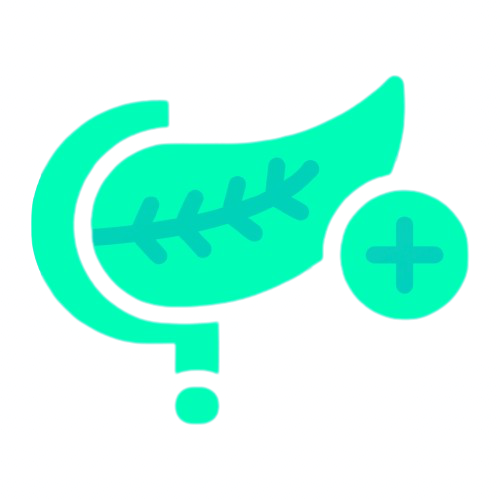Welcome to DirectDose
Changing the way the world manages insulin one dose at a time.
Partnerships & Sponsorships

T1International

FlittingHummingbird

ChronicallyMe

IncitefulMed

New Trier Student Activities

T1International

FlittingHummingbird

ChronicallyMe

IncitefulMed

New Trier Student Activities
Understanding Diabetes Management
Disclaimer: All information provided is based on medical research and educational resources, but should not be taken as medical advice. Always consult with your healthcare provider for personalized medical guidance and treatment decisions.
ICR (Insulin-to-Carbohydrate Ratio)
The ICR is the amount of insulin you need for every certain amount of carbohydrates you eat. It helps you figure out how much insulin to take with your meals.
Bolus Insulin: This is the extra insulin you take to cover the carbohydrates in your meal. It's taken at the time of eating.
Basal Insulin: This is your background insulin that you take to keep your blood sugar level steady throughout the day and night, even when you're not eating.
To calculate ICR over a few days, you can look at your blood sugar patterns after meals. If you eat a certain amount of carbs and give a certain amount of insulin, how much did your blood sugar go down? Over time, by tracking this, you can find your personal ICR for different meals.
ISF (Insulin Sensitivity Factor)
The ISF tells you how much 1 unit of insulin lowers your blood sugar. It's used when your blood sugar is high, and you need to correct it by taking extra insulin.
For example, if your ISF is 50, that means 1 unit of insulin will lower your blood sugar by 50 mg/dL.
ISF is important because it helps you adjust your insulin when your blood sugar is above your target range. The higher the ISF number, the more your blood sugar will drop for each unit of insulin you take.
You can calculate ISF by testing how much your blood sugar drops after taking a specific amount of insulin. For example, if you take 1 unit of insulin and your blood sugar drops by 40 mg/dL, that would be your ISF for that time.
How Diabetes Works in the Body
Diabetes affects how the body processes sugar (glucose), which is the main energy source for cells. The key player in controlling blood sugar is insulin, a hormone made by the pancreas. Insulin helps glucose enter cells from the bloodstream. If there's too little insulin or the body can't use it properly, blood sugar levels rise, leading to diabetes.
1. Prediabetes: The Warning Sign
What happens? Blood sugar levels are higher than normal but not high enough to be called diabetes.
Why? The body starts becoming resistant to insulin or the pancreas isn't making enough insulin.
Effect: If not managed, prediabetes can turn into Type 2 diabetes.
Think of it like a traffic jam—glucose tries to get into cells, but insulin isn't working as well, so sugar gets stuck in the bloodstream.
2. Type 1 Diabetes: The Body Attacks Itself
What happens? The immune system mistakenly destroys insulin-producing cells in the pancreas.
Why? This is an autoimmune disease—your body attacks itself for unknown reasons.
Effect: The pancreas stops making insulin completely, so glucose builds up in the blood instead of going into cells.
People with Type 1 diabetes must take insulin because their body makes none at all.
Imagine a broken key—insulin is like the key that unlocks the door for glucose to enter cells. In Type 1, the key is missing, so the sugar stays in the blood.
3. Type 2 Diabetes: Insulin Resistance
What happens? The body still makes insulin, but cells stop responding to it.
Why? Over time, lifestyle factors (like diet, lack of exercise, and genetics) can make cells resistant to insulin. The pancreas tries to make more insulin but eventually wears out.
Effect: Blood sugar stays too high, leading to complications over time.
Managed with diet, exercise, medication, and sometimes insulin if the pancreas gets too weak.
Think of it like a broken lock—the key (insulin) is there, but the lock (cells) won't open properly, so glucose gets stuck outside.
4. Gestational Diabetes: Pregnancy-Related Diabetes
What happens? Pregnancy hormones make the body more resistant to insulin.
Why? The placenta releases hormones that help the baby grow but also block insulin's effect. If the pancreas can't make extra insulin to compensate, blood sugar rises.
Effect: Usually disappears after pregnancy, but increases the risk of Type 2 diabetes later.
Managed with diet, exercise, or insulin if needed.
Imagine a clogged filter—extra pregnancy hormones act like a blockage, making it harder for insulin to do its job.
Why Choose DirectDose?
High School Innovation
Created by high school students to solve real-world problems for diabetics.
Simple to Use
Our intuitive interface makes calculating insulin doses quick and easy.
Affordable
Free to use, making diabetes management accessible to everyone.
Ready to Take Control?
Start calculating your insulin doses with confidence today. It's free, fast, and designed with your health in mind.
